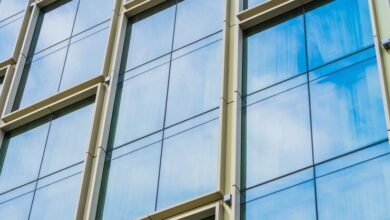The Importance of Regular Roof Inspections for Homeowners

Maintaining a safe and sturdy roof over your head is essential for the protection and comfort of your home. Regular roof inspections play a critical role in ensuring that your roof remains in good condition and prevents costly repairs down the line. This article explores the importance of routine roof inspections and provides a comprehensive guide on what to expect during these inspections.
Why Regular Roof Inspections Matter
Roofs endure a lot over the years, from harsh weather conditions to natural wear and tear. Regular inspections help identify potential problems early, allowing homeowners to address them before they escalate into significant issues. Here are several key reasons why regular roof inspections are crucial:
1. Early Problem Detection
One of the primary benefits of regular roof inspections is the early detection of problems. Small issues, like minor leaks or damaged shingles, can be identified and fixed before they cause more extensive damage. Early intervention can save homeowners from the high costs associated with major repairs or even roof replacement.
2. Prolonging Roof Lifespan
A well-maintained roof can last significantly longer than one that is neglected. Regular inspections and timely maintenance can help extend the lifespan of your roof. By addressing minor issues promptly, you can prevent them from developing into problems that could compromise the structural integrity of your roof.
3. Ensuring Safety
A damaged or weakened roof poses a safety risk to the occupants of the home. Loose shingles, leaks, or structural issues can lead to accidents or health hazards such as mold growth. Regular inspections ensure that your roof remains safe and sound, providing peace of mind for you and your family.
4. Maintaining Property Value
The condition of your roof can significantly impact the overall value of your property. A well-maintained roof enhances curb appeal and makes your home more attractive to potential buyers. Conversely, a roof in poor condition can deter buyers and reduce your property’s market value.
5. Preventing Water Damage
Leaks and water infiltration are common issues that can result from roof damage. Water damage can compromise the structural integrity of your home, leading to mold growth, wood rot, and other problems. Regular inspections help identify and repair leaks before they cause extensive water damage.
What to Expect During a Roof Inspection
Knowing what to expect during a roof inspection can help homeowners feel more prepared and informed. A thorough roof inspection typically involves several key steps:
1. Exterior Inspection
The inspection usually begins with a thorough examination of the roof’s exterior. The inspector will look for visible signs of damage, such as:
- Missing, cracked, or curling shingles
- Damaged or rusted flashing
- Moss or algae growth
- Sagging or uneven rooflines
- Debris accumulation
The inspector may use binoculars or a drone to get a closer look at hard-to-reach areas.
2. Interior Inspection
An interior inspection is equally important as it helps identify issues that may not be visible from the outside. The inspector will check the attic and other interior spaces for signs of:
- Water stains or discoloration on ceilings and walls
- Mold or mildew growth
- Wet or damp insulation
- Structural damage or sagging
These indicators can point to leaks or ventilation problems that need to be addressed.
3. Checking Roof Ventilation
Proper roof ventilation is crucial for maintaining the longevity of your roof and the comfort of your home. The inspector will check the condition and placement of vents to ensure there is adequate airflow. Poor ventilation can lead to heat and moisture buildup, which can damage the roof and increase energy costs.
4. Examining Gutters and Downspouts
Gutters and downspouts play a vital role in directing water away from your roof and home. The inspector will check for:
- Clogs or blockages
- Signs of rust or corrosion
- Loose or detached sections
- Proper alignment and functionality
Properly functioning gutters and downspouts help prevent water damage to your roof and foundation.
5. Assessing Roof Penetrations
Roof penetrations, such as chimneys, skylights, and vents, are common sources of leaks. The inspector will closely examine these areas for signs of damage or improper sealing. Ensuring that these penetrations are properly sealed is essential for preventing water infiltration.
How Often Should You Inspect Your Roof?
The frequency of roof inspections depends on several factors, including the age of your roof, the type of roofing material, and local weather conditions. As a general guideline:
- New Roofs: Inspect every two years
- Aging Roofs (10 years or older): Inspect annually
- After Severe Weather: Inspect immediately after major storms or extreme weather events
Regular inspections are essential for all types of roofs, including asphalt shingles, metal, tile, and flat roofs.
DIY vs. Professional Roof Inspections
While homeowners can perform basic visual inspections, professional roof inspections offer several advantages:
1. Expertise and Experience
Professional roof inspectors have the training and experience to identify issues that may be overlooked by untrained eyes. They can spot subtle signs of damage and provide accurate assessments of your roof’s condition.
2. Comprehensive Assessment
Professional inspections made by Best Choice Roofing of Detroit are more thorough and cover all aspects of your roof, including hard-to-reach areas. Inspectors have the tools and equipment needed to conduct detailed examinations.
3. Safety
Climbing onto a roof can be dangerous, especially for those without proper training and equipment. Professional inspectors are equipped to perform inspections safely and effectively.
Conclusion
Regular roof inspections are a critical aspect of home maintenance that should not be overlooked. By identifying and addressing issues early, you can prolong the lifespan of your roof, ensure the safety of your home, and maintain its value. Whether you choose to perform basic visual inspections yourself or hire a professional, the key is to stay proactive and attentive to your roof’s condition.
By following the guidelines outlined in this article, homeowners can take the necessary steps to keep their roofs in top shape and avoid costly repairs down the line. Remember, your roof is a vital component of your home, and taking care of it is an investment in the safety and longevity of your property.



